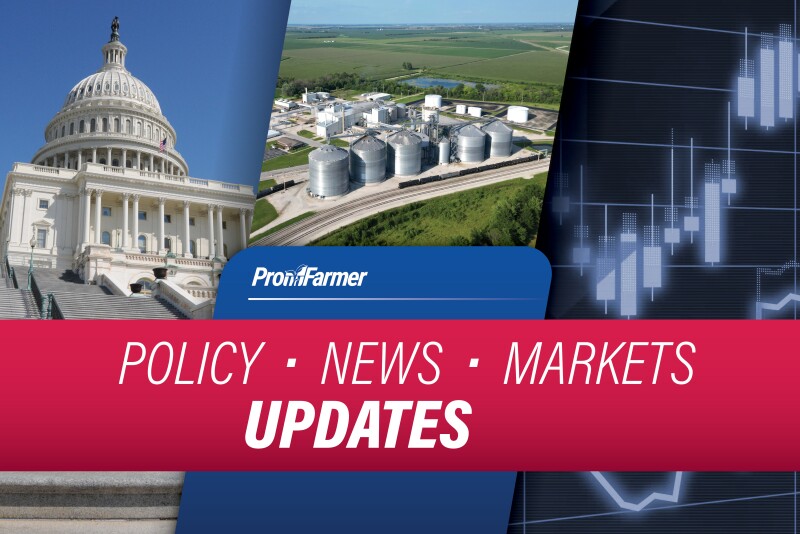EU, U.S. scramble to avert tariff showdown... European and American trade officials are racing to defuse a major transatlantic tariff clash, with EU Trade Commissioner Maros Sefcovic scheduled to speak today with U.S. Trade Representative Jamieson Greer. The call follows Sefcovic’s in-person meeting Monday with Commerce Secretary Howard Lutnick, as tensions escalate over President Donald Trump’s threat to impose a 30% tariff on all EU imports if no deal is struck by Aug. 1.
In a bid to avoid further escalation, European technical teams are now headed to Washington for intensive negotiations. Despite internal pressure, the European Commission has opted against immediate countermeasures, emphasizing diplomatic efforts to reach a resolution and preserve trade stability. “The proposed tariffs are absolutely unacceptable,” said a Commission spokesperson, while affirming the EU’s commitment to dialogue. Talks are expected to continue throughout the week.
U.S. tariffs on Mexican tomatoes return... The Commerce Department said the U.S. was withdrawing from a 2019 agreement with Mexico that suspended an antidumping duty investigation on Mexican tomatoes. Most fresh tomato imports from Mexico will now face a 17.09% tariff.
Key points:
- The new tariff is projected to raise the price of Mexican tomatoes for U.S. consumers by about 10%, with a corresponding 5% drop in demand.
- Mexico supplies 61% of the U.S. fresh tomato market, nearly double the U.S. domestic production capacity. Replacing Mexican supply would require an additional 17,000 to 101,000 hectares of U.S. farmland.
- The U.S. is the destination for 93% of Mexico’s tomato exports, valued at over $2 billion annually.
- U.S. tomato production is seasonal, with Florida and California covering different months, while Mexico offers year-round supply.
- Some companies, like Heinz, which uses only U.S.-grown tomatoes for its ketchup, are unaffected by the tariff. However, sector experts warn the tariff will raise prices and reduce competitiveness for most Mexican producers.
The U.S. Department of Commerce stated that the previous agreement failed to protect domestic growers from unfairly priced imports, prompting the reinstatement of the antidumping duty.
Mexico called the actions “unfair” and said it would help local tomato producers seek a deal to suspend the duty as well as support them in seeking new global markets.
USDA halts extra sugar imports, citing ‘Farmers First’ policy shift... USDA announced it will authorize no additional imports of specialty sugars beyond what is required by international agreements, marking a notable shift under Secretary Brooke Rollins’ “Farmers First” policy agenda. Deputy Secretary Stephen Alexander Vaden pointed to “devastating impacts” from natural disasters, past administration policies, and rising production costs, blaming a global trade landscape that has “favored foreign competitors over America’s farmers” for the projected record U.S. agricultural trade deficit.
Vaden emphasized that while current sugar policy aims to protect domestic growers from subsidized foreign competition, the sector is not immune to broader industry challenges. “Over the last 20 years, sugar imports have more than doubled and producers have lost 15% of the U.S. sugar market to imports, leading to closures of mills and processors — economic and financial losses that impact farmers, rural communities, and consumers,” Vaden said. “This decision begins to right the ship.”
USDA opens enrollment for Grassland Conservation Reserve Program... USDA announced that enrollment opened Monday for the Grassland Conservation Reserve Program (Grassland CRP), a voluntary initiative designed to help agricultural producers and private landowners protect and conserve grasslands. The sign-up period runs from July 14 to Aug. 8, 2025.
Grassland CRP, administered by USDA’s Farm Service Agency (FSA), aims to conserve grasslands while allowing participants to continue most grazing and haying activities. The program is specifically focused on: Supporting grazing operations by enabling continued agricultural use of enrolled lands; enhancing plant and animal biodiversity by protecting native grasslands and habitats; and safeguarding at-risk lands, especially those with shrubs and forbs, from being converted to other uses.
Currently, more than 25.8 million acres are enrolled in CRP, with nearly 9.7 million acres in Grassland CRP. On May 12, FSA opened General and Continuous CRP enrollment for 2025. FSA is currently reviewing submitted offers and will announce accepted offers later. Due to the 27-million-acre statutory cap, only 1.8 million acres are available for all CRP enrollment this fiscal year.

